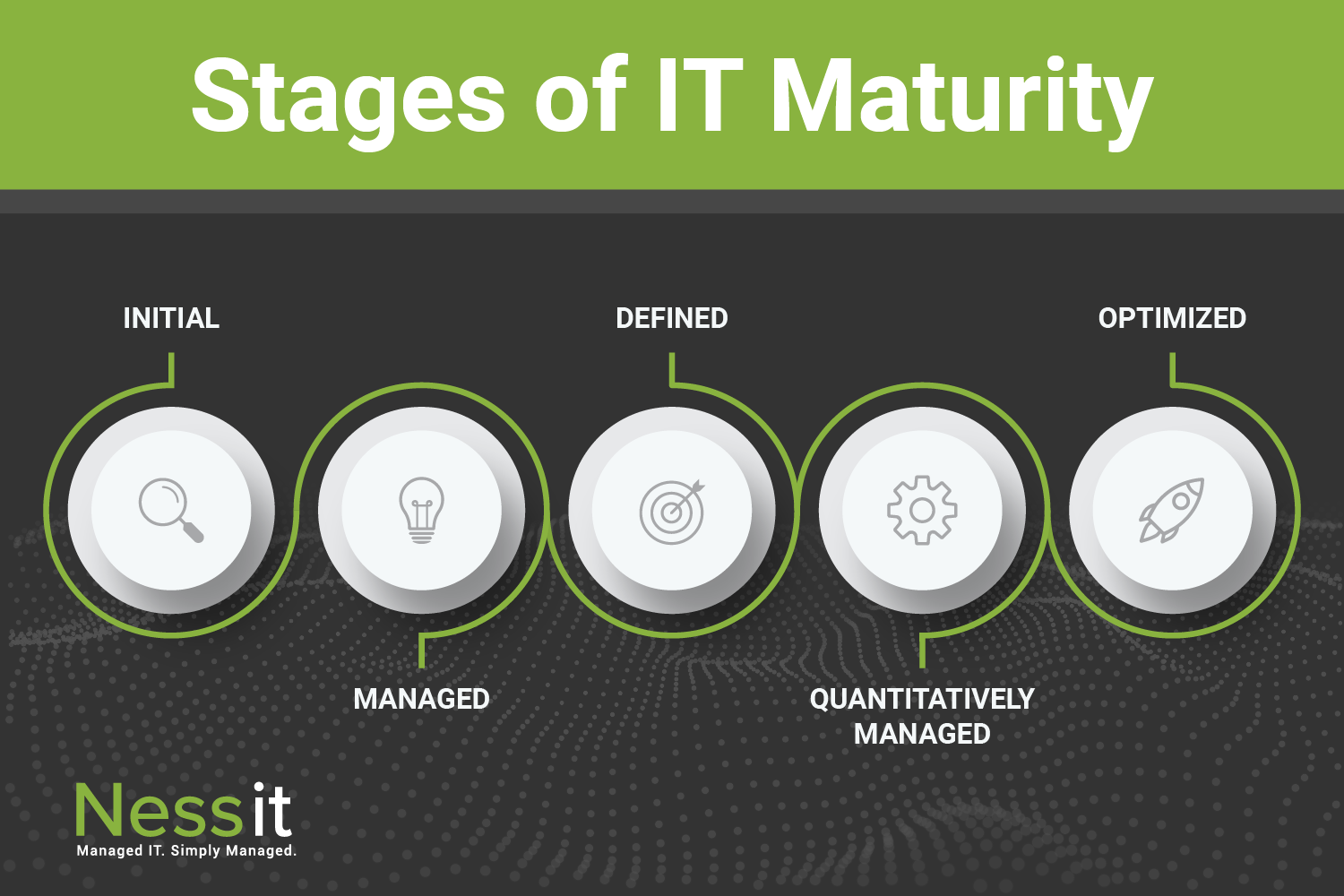When a New Hampshire town became dissatisfied with their longtime IT vendor, they went looking for a second opinion. We were one of three managed service providers to submit a bid with remediation plans, and our bid was selected to become this municipality’s IT vendor. How did we create a custom proposal for their specific IT needs?
The effectiveness of your IT infrastructure greatly impacts the success of your business. Having basic IT systems in place is not enough. Achieving IT maturity is critical for long-term growth, innovation, and competitive advantage. So, what exactly is IT maturity, why is it important, and how can Nessit help your business get there?
The single most effective way to safeguard your business from cyberattacks is through employee training. Employees can unknowingly become the gateway for cybercriminals by clicking on malicious links, using weak passwords, falling for phishing scams, or accidentally sharing sensitive information that can compromise your entire network. Here’s what you need to know to protect sensitive data and maintain the integrity of your IT infrastructure:
Cybersecurity is a critical component in any organization, large or small. The increasing frequency and evolving nature of threats means that simply installing antivirus software or setting up a firewall isn’t enough. Security is an ongoing process that requires constant vigilance, regular updates, and proactive measures. As a Managed Service Provider (MSP), Nessit understands the complexities of maintaining robust cybersecurity and is dedicated to safeguarding your business.
Designing a cybersecurity program is complex, and expecting everyone within your organization to follow complicated policies is bound to fail. As with most things, simpler is better. At Nessit, experience has taught us that easy-to-understand cybersecurity policies are the most effective, and as cyber threats become more sophisticated, protecting sensitive data has never been more critical.
When a Portsmouth, NH engineering firm approached us in late 2022, they had 50 employees and were spending roughly $500,000 annually on their IT. Their work required a very specific approach to IT systems, and we knew that to come up with a solution we had to ask the right questions and get creative.
Achieving peak performance from your IT systems means more than just investing in the latest technology or services. Forward-thinking companies recognize the importance of having a future-proof IT strategy in place, and both co-managed and fully managed IT services can provide an effective solution for your business.
Your business relies on digital technology, and as cyberthreats evolve and become more advanced, protecting your data with proactive, robust security measures has never been more important. A data breach can have a catastrophic effect on your company’s finances, productivity, and reputation, and may involve legal repercussions if industry regulations have been violated. Many of the threats businesses need to guard against originate in the internet realm known as the “Dark Web,” a breeding ground for criminal activity and a marketplace for stolen data.










